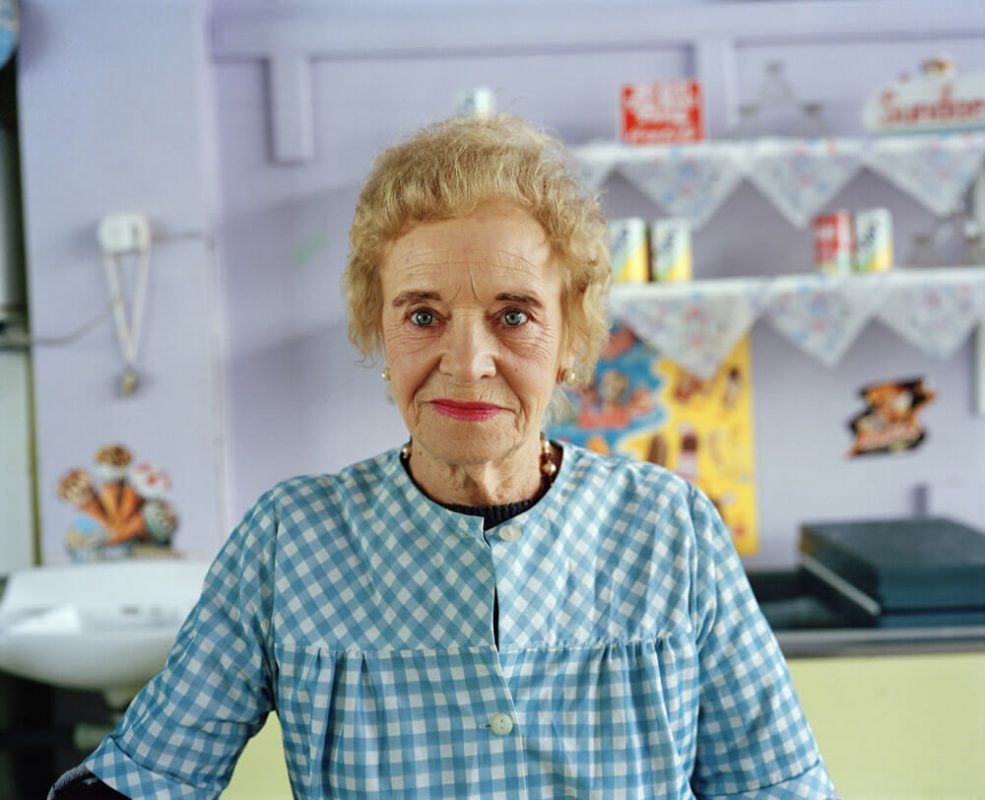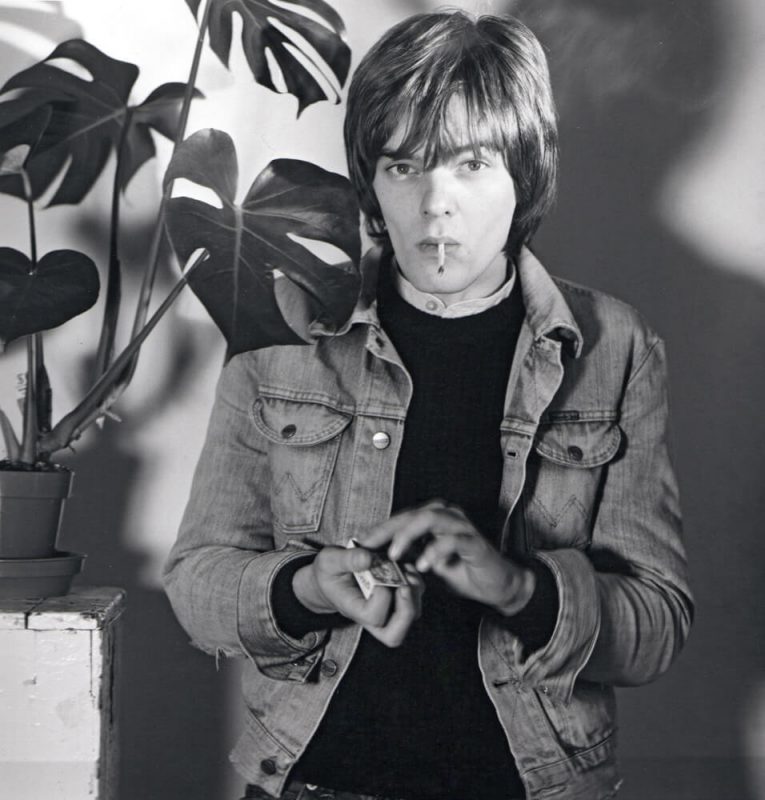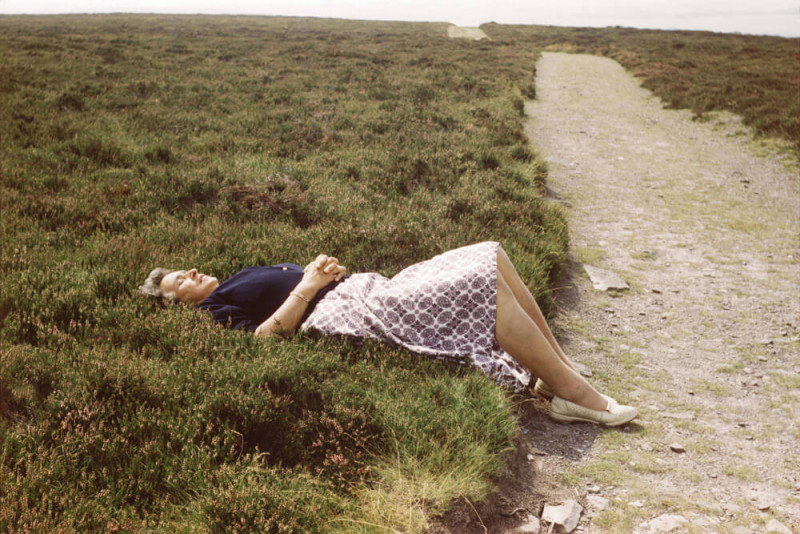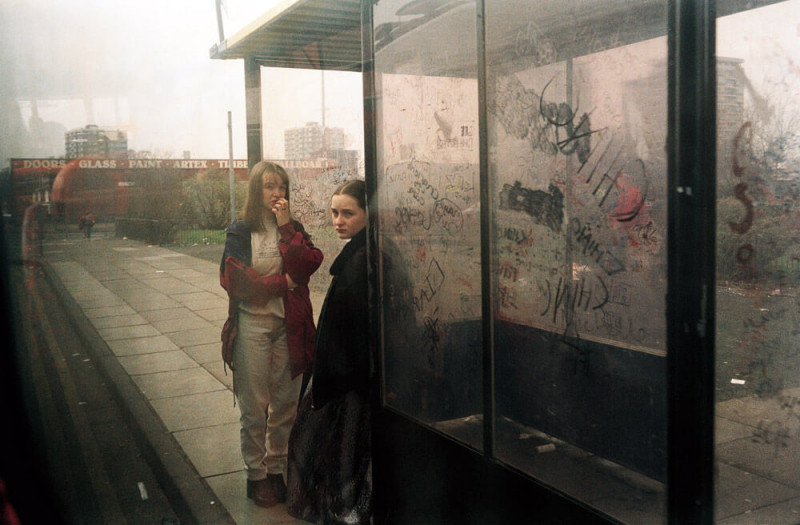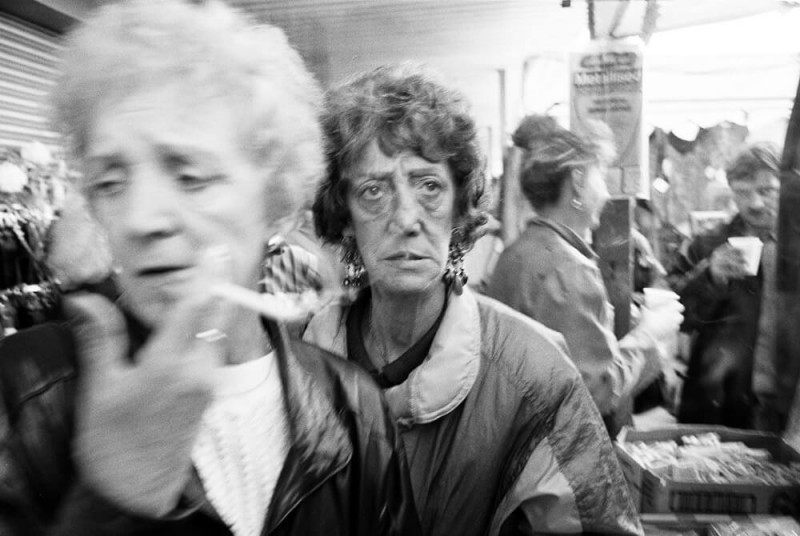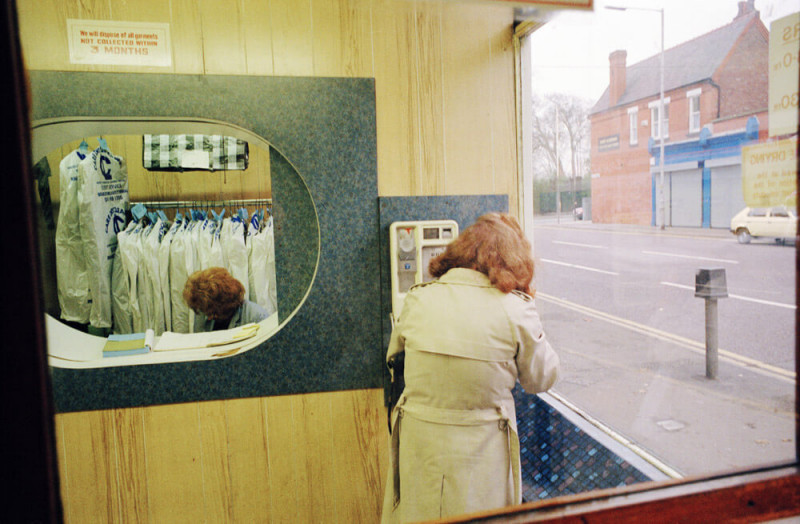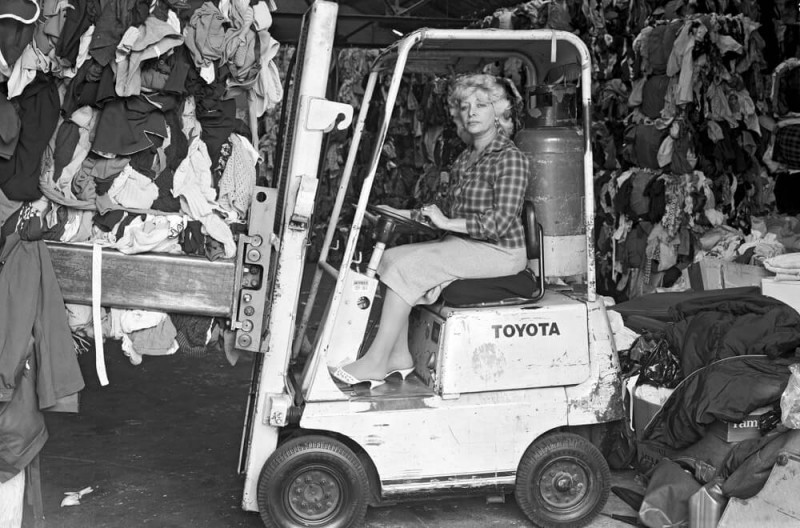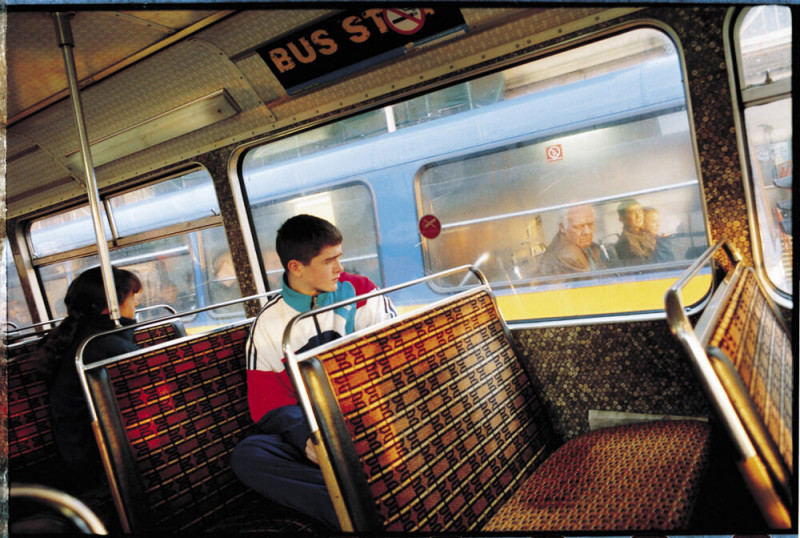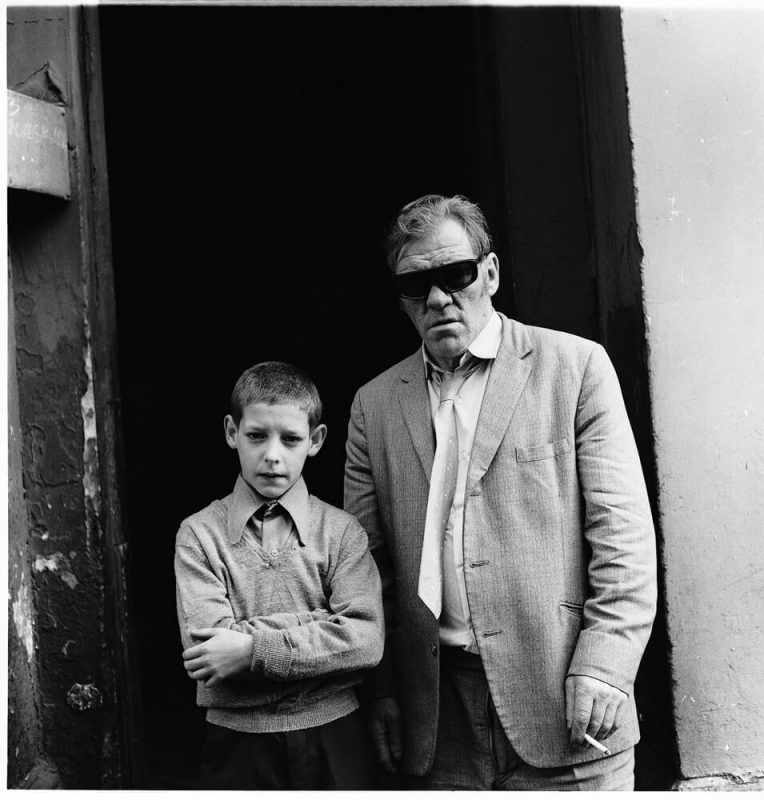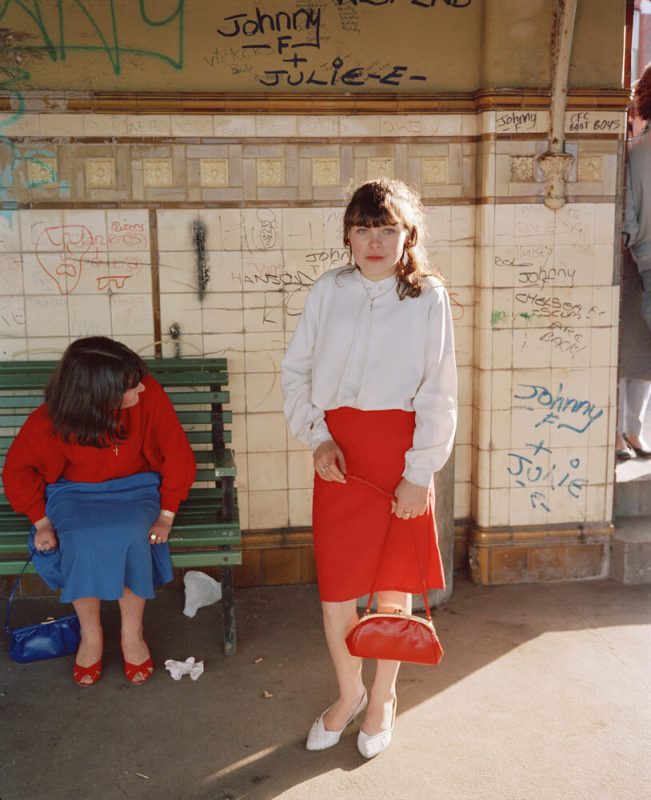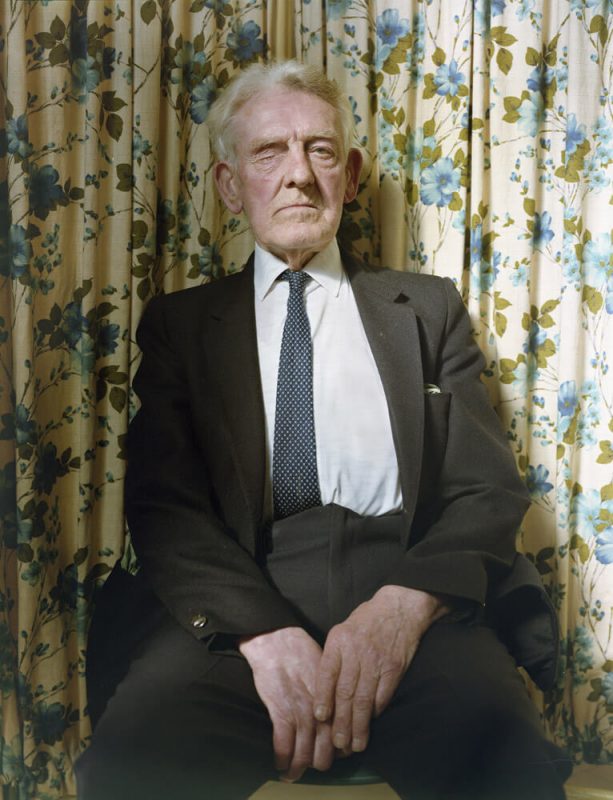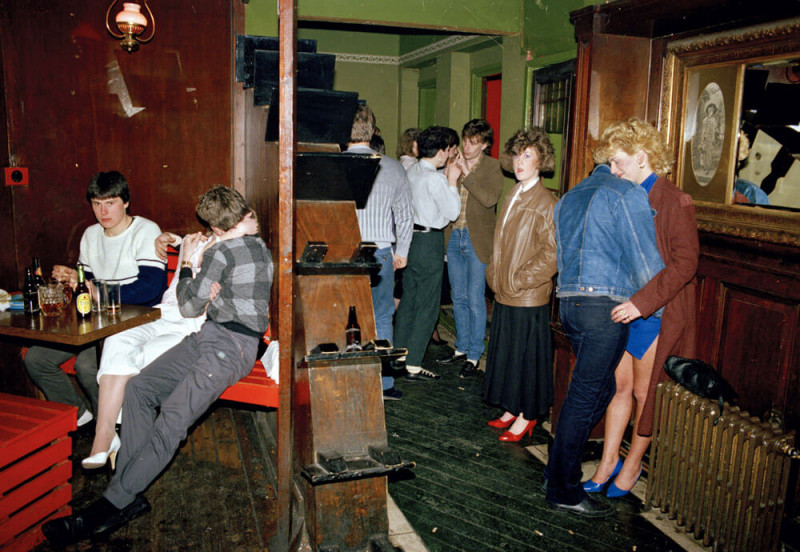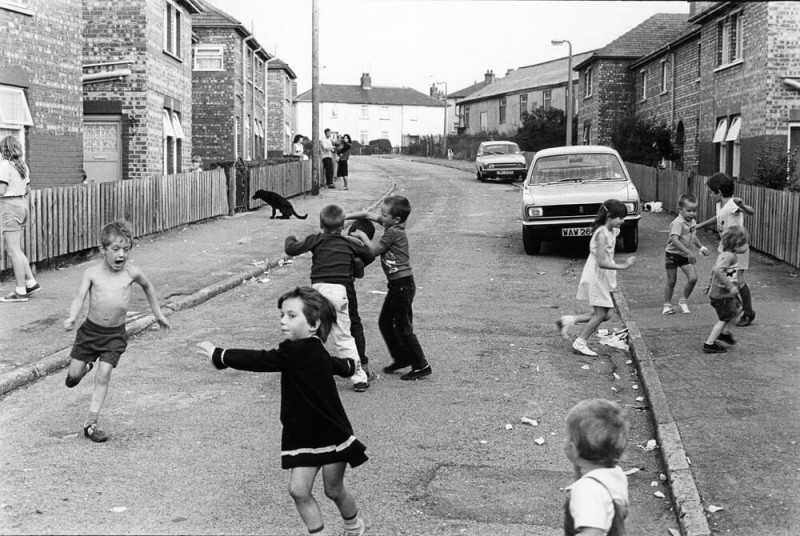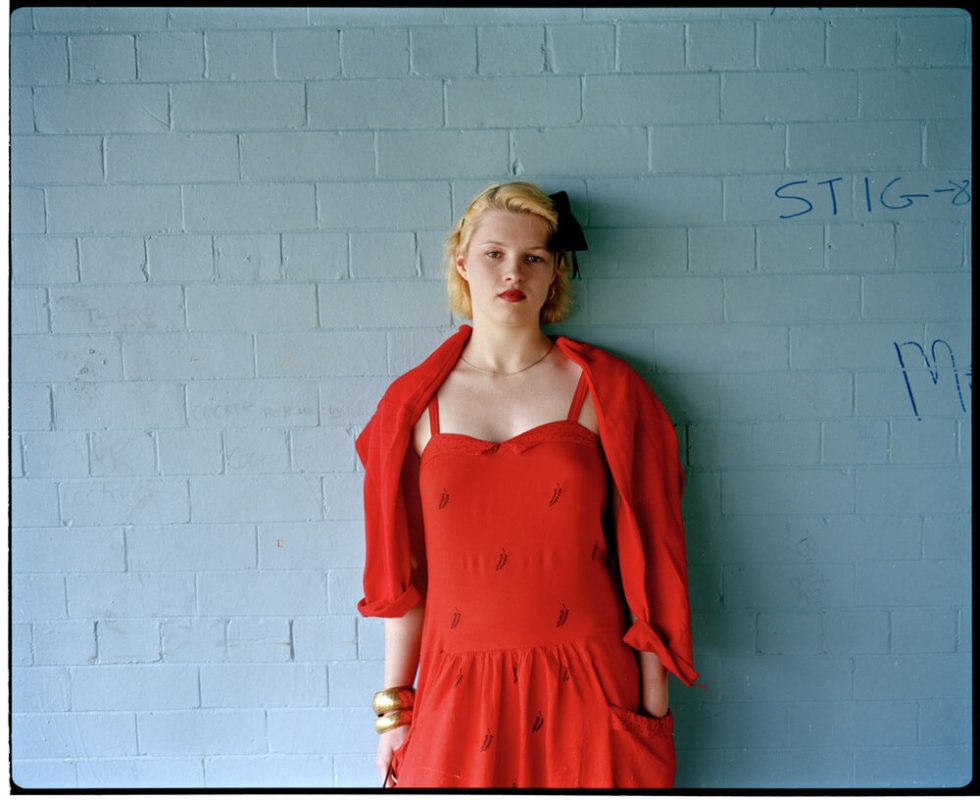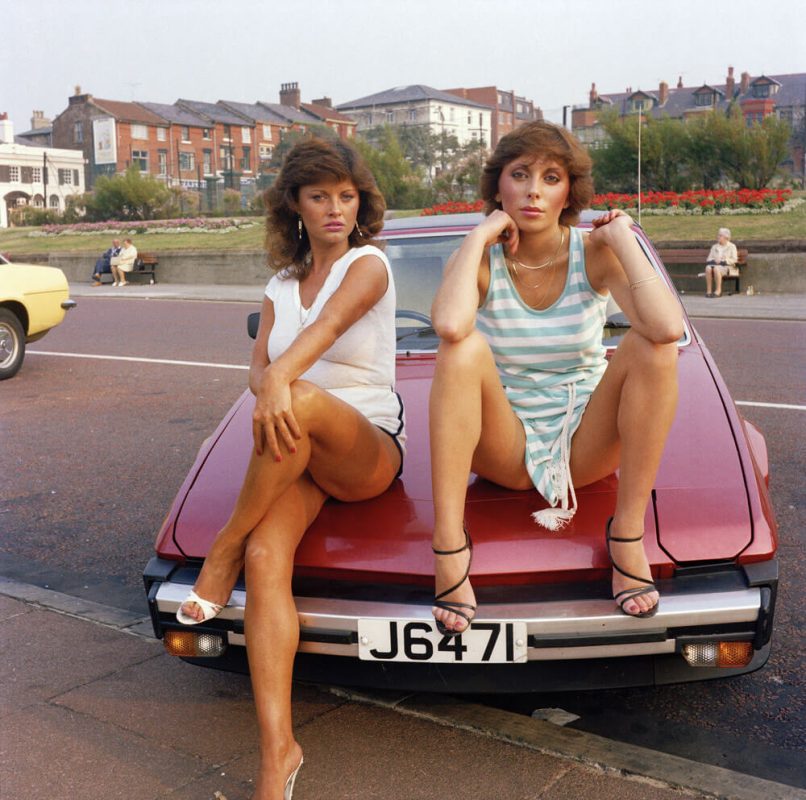Tom Wood
Men and Women
Essay by Francis Hodgson
There is something hard to grasp about the lifetime of powerful photography produced by the Liverpool photographer Tom Wood. His pictures overlap with other things that we know. They overlap with other pictures, for a start. Wood does the ‘peculiarity of the British’ like a Homer Sykes or a David Levenson (recently published by Café Royal Books and The Sunday Times). He can do schoolgirls like a Markéta Luska?ová. He can do men at work like an Ian Beesley or an Ian Macdonald. Nightclubs, of course, he has done for years, and some of the pictures look like Billy Monk or PYMCA.
Wood is a sociologist, ethnographer, local historian, political campaigner, novelist, autobiographer. He has made long studies of the football culture, and hilarious one-liners which you just have to see to get. It gets worse: Wood uses medium format, panoramic, little cameras, big ones. He uses all sorts of lighting arrangements.
Here he is, in the transcribed interview he gave to annotate a file of brilliant pictures of the Cammell Laird shipyard he made in 1996 on a commission for the Documentary Photographic Archive, now deposited at Greater Manchester County Record Office: “I used different types of film for the sake of economy. When I started I tended to use what film I had in stock. So I had some date-expired Konica, but I also had free film from Jessops including Fuji Reala, so I used that. The negative film doesn’t make much difference at this size as long as you expose correctly. The colour balance is being altered all the time due to long exposures and different lighting sources – tungsten or welding or fluorescent. At the same time I would use fill-in flash. This messes up the colour, but that’s O.K.”
If we define a photographer by his technique, we get nowhere much with Wood. But that is OK; a photographer like Wolfgang Tillmans has much of the same elusive refusal to stay in one conveniently marketable box. If we begin to define him by his subject material, we get a little closer: as far as I know, Wood has not done much in the way of would-be Zen black pebbles, or shiny modernist architectural details. I rather doubt he has done many product shots of perfume bottles, either. Even so, it would be a mistake to prejudge the question. Martin Parr (who himself made great work at New Brighton, the garish beach resort at the end of the Wirral, north of Birkenhead, in the very heart of Wood’s hunting grounds) makes a lot of commercial pictures for fashion magazines, and so have people like Nick Waplington. There is no a priori reason why Wood should not do the same, although, again, I do not know that he has. So you cannot easily define Wood by what he does, and you need to be careful defining him by what he has not yet done.
Many years ago, when I worked at The Photographers’ Gallery, we represented Matthew Dalziel (who was not then yet Dalziel + Scullion) and held a particular set of pictures of his called Images for Hugh. They commemorated a friend who had died in an industrial accident. They were close large format views of a workplace, in colour, and there was something about the In Memoriam status they held that demanded the most exceptional care in the scrutiny. The photographer had done his looking harder than normal, and somehow as viewers it was only fair to do the same. I saw lots of people over a period of months look quite casually at those pictures, and then with a double-take, look harder, feeling the seriousness before they knew why. I pretty much consistently find that same experience when looking at Tom Wood.
He is one of those photographers who often publish with not much in the way of explanation. His recent show at The Photographers’ Gallery was strict and austere in the presentation – to the point, I may say, of letting him down a little. Two minutes in his company on the opening night provided me with five or ten little details about pictures which nobody who had not the chance of meeting him could have known. Indeed, Wood is one of the photographers I would like to sit down and listen to at length – I think it is fair to say he has not had the chance properly to put the back story yet. But one can see without knowing the details, if one looks hard enough. The details which matter will somehow spring to the eye. Wood demands that.
He includes, for example, a number of pictures of his family and of those around him in his work with no hint that they are closer than any other sitter. He might use their names in a caption, but since he photographs intensely in a relatively restricted area, he knows the names of a lot of people. He also is quite happy to shelter pictures by other people under his own umbrella without necessarily feeling obliged to use terms like ‘appropriation’ or ‘repurposing’. So he told Sean O’Hagan of The Guardian about his terrific picture of a woman lying collapsed by a road: “That’s not even my photograph. She’s my Auntie, but a friend of hers took the picture. I love it so I put it in there.” He is informal like that, irregular in his photographic habits and hard to pin down.
He is known for taking many hundreds of pictures on each project, and that has done him harm. I have heard him disparaged with remarks along the lines of the ten thousand hours principle (that Malcolm Gladwell discussed in his book Outliers) – that anybody can become good at anything if they put that time into it. My take on it is that I could not care less whether it is the hours or the most instinctive natural talent, but he must be the most remarkable editor, to take only what he wants from that volume and not be bogged down by it. Certainly, by whatever magic it is achieved, he does not often release pictures that are less than interesting. He is varied and non-formulaic, and his curiosity is piqued by different kinds of things in different scenes, but he is unerring.
Here is a picture of a man in a pub. It is suitably blurred, but the man is looking just near the camera, tie beginning to come adrift. His face is pleasant but his eyes are at the extreme edge of their orbits, as he turns towards the camera. The skin tones are too red – or just red enough for the cruddy lighting on licensed premises. A few golden flickers off gaudy joinery in the background provide the kind of twinkle that used to come from candlelight. A flare of light occupies about ninety degrees of a circle below the man’s chest, like a little reminder of what it’s like to look through the bottom of a glass. All in all, it is only a little study of a man in the pub, with bonhomie and potential threat in an easy balance. It is a subtle and fine picture, although like so many of Wood’s you could miss it if you are not concentrating. It is only called Untitled, 2010. Does it make any difference that this man Wood photographed is in fact Graham Smith, one of the subtlest photographers ever to have raised a camera (or a glass!) in a pub, the Hermann Melville of the drinking culture? You would not expect to know that, but it is another layer in the picture when you do.
Wood has been a connoisseur’s photographer. His publisher’s website quotes a nice compliment to him from Lee Friedlander. Chris Killip is known to admire some of what he has done. At long last he is now receiving his first ever UK retrospective at the National Media Museum in Bradford. It is well overdue, and I shall tell you why.
Over many years Tom Wood has deliberately put aside all that makes it too easy to latch onto this or that set of pictures. He has destroyed the familiar, often crude, pegs upon which we hang our approval. So many photographers grub about until they have a formula, and then force all their pictures into the same mould. Not Wood. Forever unsatisfied, never content to make a series when a single picture will do, his curiosity and his intellectual powers always fully engaged, he has roamed around making pictures of the world he lives in. Then he has roamed about in the pictures until he has found the telling details, the arrangements that add up to more than the sum of their parts. He is a brilliant but uncomfortable communicator: he reminds me often of Ian Dury, as it happens. He is brilliant at things like composition and sequencing and lighting and framing; but where most photographers end their pictures with those things, he starts with them. Enjoy those things, and then, if you look hard enough, you can get irony and wit and humanity in spades. But it is the looking that Wood demands.
I think of Tom Wood as quite a Dickensian photographer. His real subject matter is not this or that group or subculture, and the way they carry on. What he is really about is the pressure that morals and ethics and manners find themselves under from circumstance. People are often kind or gentle in Tom Wood’s pictures, even in the meanest-looking of circumstances. It is not a style, and it is not a technique, and it is not even really a subject. It is a mistake to think of what Wood does as reportage or street photography or this or that benighted project. He is just a man who has found the means to say important things to those who take the trouble to care. ♦
Tom Wood was born in 1951 in County Mayo in the west of Ireland. He lived and worked on Merseyside between 1978 and 2003 before he moved to his current home in North Wales. Wood has published numerous books, including Bus Odyssey, People, All Zones Off Peak and Looking for Love. His latest book, Men and Women, will be published by Steidl in 2013. He has had solo and group exhibitions worldwide and his work is represented in the collections of major international museums. Tom Wood: Photographs 1973-2013 is a collaboration between the National Media Museum and The Photographers’ Gallery London.
All images courtesy of the artist. © Tom Wood

